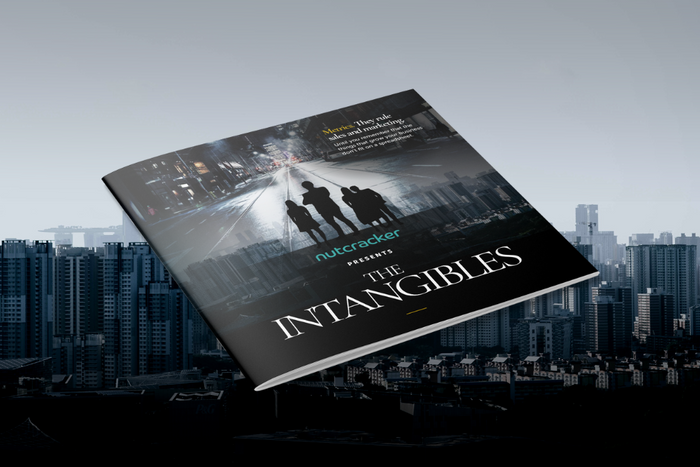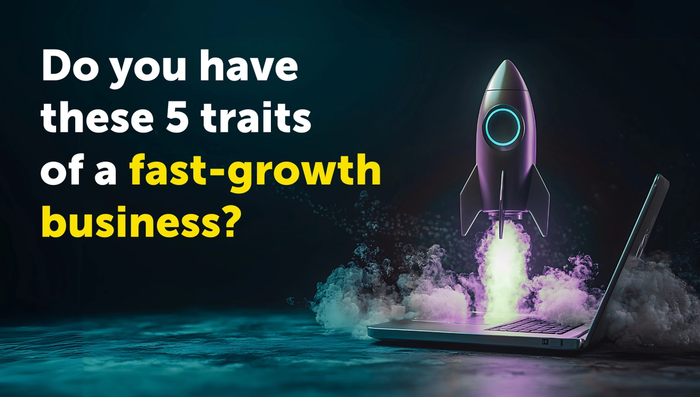Marketing
The B2B Customer Journey – what you need to know
If there’s one fact to know about B2B buyer behaviour, it’s that only 5% of B2B buyers are actively looking to buy at any given time. Logically, that means if you want to reach 95% of your audience, you need to think long-term.
Interestingly, Marketing Week also reports that those marketing to B2B buyers spend 92% of their budget on this 5%, focusing on short-term conversions — quick wins that look and feel good, but arguably are not a sustainable or efficient use of resources to unlock the 95% that may not be ready to buy at that exact moment.
It’s the marketing equivalent of fast food — very gratifying in the moment, but lacking real nourishment.
The B2B customer journey is about knowing your target market, and them knowing you. It’s about understanding them, their business, their pain; it’s about them knowing who you are and what you stand for — feeling that you’d be a partner, not just a vendor.
Just because B2B is commercial, that doesn’t mean it’s transactional.
Marketing to B2B: Feast and Famine
When marketers set out to get quick wins, things can look like they’re going very well. A short burst of marketing brings in leads, some of these leads convert, and that feels like success.
It is, but it’s a very short-term kind of success. The feast is on, but when those leads run out, it’s back to famine and the urgent scramble to secure more leads.
The problem with the all-hunting no-farming approach is that it’s unpredictable and unstable. If you plant seeds with a long-term strategy, they may to the outside eye take longer to yield results, but the leads that you find, and the customers that you win, will be a better fit, more loyal, more valuable, and more importantly, will know you exist when they are ready to buy.
B2B buyer behaviour isn’t what you think it is
Contrary to a common assumption, B2B buyers are more emotionally driven than consumers. Yes, business is a world of ROI, CPL, and KPIs, but there are humans behind all of those terms, who make decisions that affect their everyday working life, and in turn their careers.
It’s no wonder the process is emotional. They’ll be drawn to partners they trust, and who feel like the right fit as, put simply, they don’t want to get it wrong.
How to reach B2B Customers: finding the right fit
What makes ‘the right fit’?
Usually, it’s a collection of ideas, values, and characteristics which reinforce that you understand your customer’s pain points, their business, and what they need.
Of course, you can’t be all things to all businesses, but people appreciate and remember those who made them think, made them laugh, or gave them valuable insight into a problem. Those are the things that bring your brand to mind in that initial stage of the B2B buyer journey when buyers are thinking about new partners.
Now, people only think about new partners when they know they need them. Back to that 95% statistic — among that huge majority, who aren’t in the decision phase of the buying journey, are those who aren’t even in the B2B customer journey at all.
Let’s imagine a Chief Product Officer. They may know that their product can be better, but don’t know that there’s something out there that can make it better. They’re not in the market for a solution because they don’t know that one exists.
Tip: Don’t assume that everyone knows they need to buy something. Some don’t know there could be a solution and some don’t even know there’s a problem.
What is theB2B Customer Journey?
If we break down the broad stages of the B2B buyer journey or ‘cycle’, we have:
- Awareness: when the buyer realises they need help
- Consideration: when the buyer defines their problem and researches solutions
- Decision: when the buyer chooses the solution
Most of the time, anyone who engages with a brand has investigated them first, almost certainly online. ‘Awareness’, and a large proportion of ‘Consideration’, happen before any interaction with a potential partner, and this is key to remember.
Studies differ on the number, but somewhere between 60% and 70% of the B2B buying process happens before engaging with a supplier.
This means that any actual conversations you have with prospects are almost certainly happening towards the end of the buyer journey, not the beginning.
A lot of the decision happens before you can reply to, explain, or discuss anything.
How to reach B2B customers: branding and understanding
That means your brand needs to do a lot of the heavy lifting. It has to be content-rich, to express your identity as a business, and to communicate what it’s like to work with you.
Remember, also, that because the B2B customer journey tends to be longer than in B2C, and because there are more stakeholders involved in the decision, marketing that understands this and talks to different stakeholders will be far more likely to strike a chord and be successful than formulaic prose targeting at one perceived decision maker.
B2B marketing: how to run a successful campaign
How, then, do you look like the sort of company that people want to work with? Here is a quick B2B marketing “how-to”:
1. Plan long-term
If you can, you’ll want to talk to your whole market. Short-term campaigns have their place. Even if they’re 5% of that market, active buyers are there for the taking.
Performance marketing and quick wins are always valuable. Just don’t over-value them. If you don’t appeal to the 95% and have them on your radar, others will.
What’s most important is to continually plant seeds. Map out your content plan with a schedule of topics, angles, and insights, and make sure you talk about your areas of expertise, in as many media as appropriate.
The brand that consistently provides insightful thought-provoking content is far more memorable, trustworthy, and authoritative than the one that just shouts about a product every so often.
2. Know your audience
If you know your proposition, then you know your audience. That’s to say that whatever pain you solve, your audience are the people who feel that pain.
Knowing that, you know the sort of companies they work for, the kind of job titles they have, even what their typical day might look like.
Go where those B2B marketing personas lead you.
How does your audience like to be addressed, and where do they like to be reached? It’s tempting to jump on trends, but think before you jump. A platform like TikTok might be the buzz platform of the moment. Lots and lots of people are on it, but are your buyers?
3. Place your buyer at the centre of your content
The best way to reach your audience is to think of B2B marketing as building a relationship. None of us would want to hear again from someone who boasted constantly about their strengths and virtues. In the same way, ‘me, me, me’ marketing is not remotely inspiring.
Just having a content calendar doesn’t make your strategy effective. You can have a great schedule of webinars, blogs, and whitepapers, but if they’re all about bare-faced self-promotion, they will not be at all impressive or memorable.
You know your audience, so talk to them.
Demonstrate that you truly understand their challenges. Offer new ways of thinking about their situation and their pain points. Provide data that gives a new perspective on their problems.
Anyone can understand their product. An expert understands their audience.
Are you reaching your whole target market, or does your marketing go through cycles of feast and famine? If your B2B marketing strategies are struggling to inspire your prospects, give us a call or drop us an email. Let’s talk about you, your strategy, and, most importantly, your audience.
Get in touch at hello@nutcrackeragency.com or call 0203 941 0305.
Share this:





